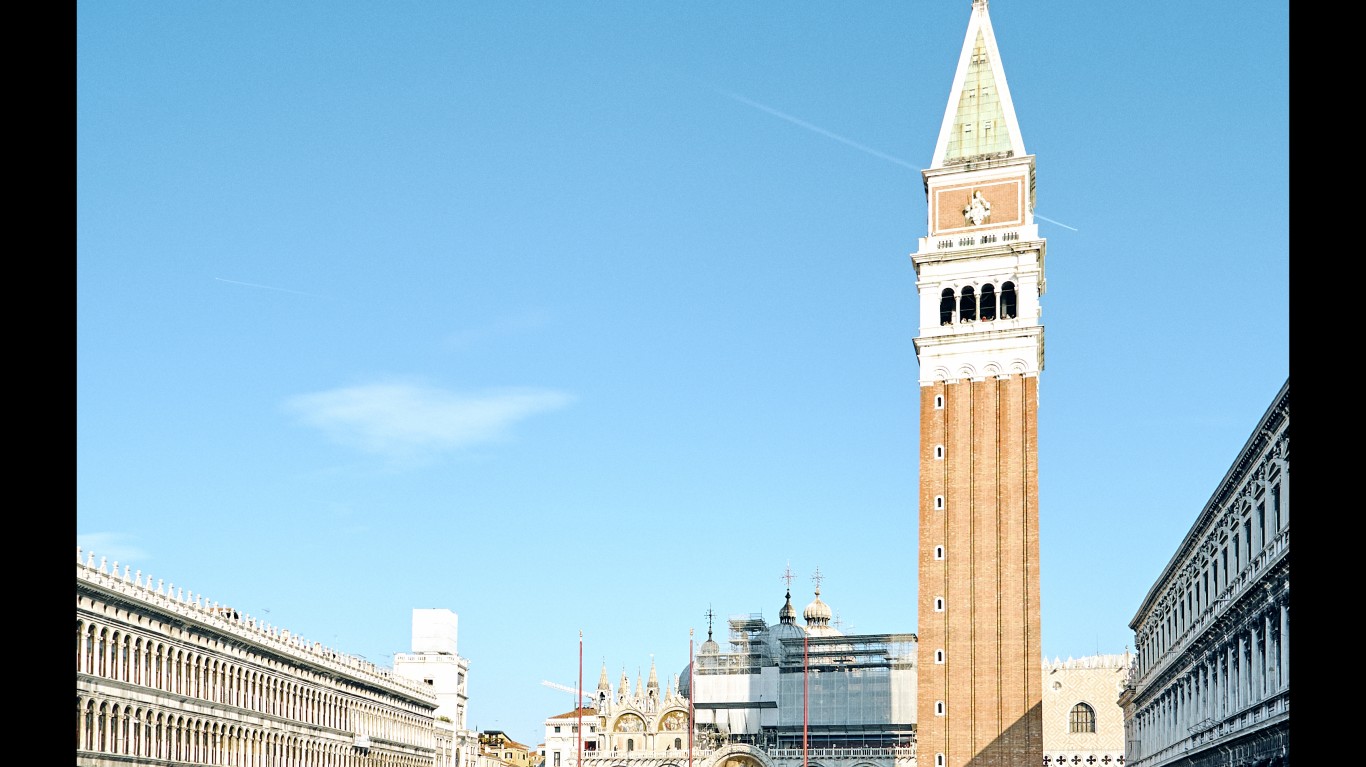
Much of the world as we know it might disappear or at least become uninhabitable in the coming decades — in some cases by as early as 2050, and almost certainly by 2100 — if the international community doesn’t take dramatic action to curtail the effects of climate change very soon.
Drought and other effects of increasing temperatures potentially render some parts of the globe unliveable, as do increasingly frequent and devastating hurricanes, typhoons, and monsoon rains. The main culprit, though, is the rise in sea level caused by melting ice sheets and other phenomena associated with global warming.
Some of the most vulnerable places in the world are islands whose elevations are at or below mean sea level, but alluvial plains and other low-lying places on every continent, even far inland, may be inundated too. Here are 20 islands that will disappear in your lifetime.
According to UNESCO, the places at risk include almost a fifth of the planet’s 720 World Heritage sites. But whole cities, including some of the world’s largest — Shanghai, Hong Kong, Mumbai, Bangkok, London, New York, Miami, Sydney, and Rio de Janeiro among them — are seriously threatened too. These are cities around the world that will soon be underwater.
24/7 Tempo based its list of countries, regions, and cities around the world that are at risk of flooding permanently over the next 30-plus years on projections of sea level rise and related data from Climate Central, FloodMap, Earth.org, ClimateLinks, the World Bank, the Union of Concerned Scientists’ Climate Hot Map, and UNESCO’s report on Climate Change and World Heritage. Editors then selected a representation of potentially affected areas in some 21 countries on six continents, and identified a total of 28 specific places of special interest in each of them.
Click here to see 28 amazing places that could be underwater by 2050
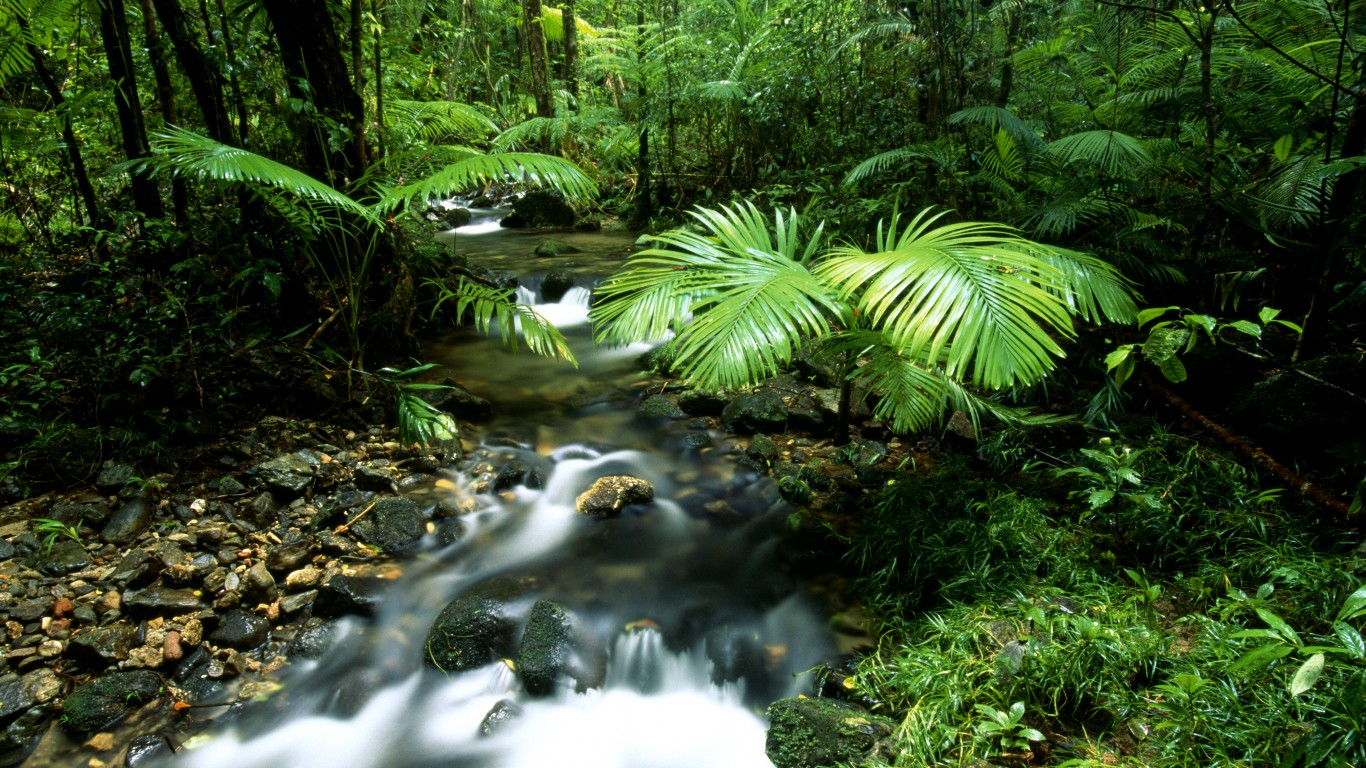
1. The Daintree Rainforest
> Site: Queensland, Australia
Climate Central warns that parts of Australia’s eastern coastline are on track to be subsumed by rising sea levels. A portion of the lush Daintree Rainforest in Queensland, part of the world’s oldest surviving tropical rainforest, would be affected, as would the picturesque town of Port Douglas to the south.
[in-text-ad]

2. Early Christian monuments
> Site: Ravenna, Italy
Ravenna, on the Adriatic coast in Italy’s Emilia-Romagna region, is known for its late Roman architecture, but it’s also home to the most important assemblage of Byzantine art outside Istanbul — especially the exquisite mosaics, sculptures, decorative stone- and metalwork, and ceramics housed in its many early Christian mausoleums and basilicas. Some sources warn that rising waters could flood many of these treasures.

3. Elephanta Caves
> Site: Elephanta Island (Mumbai), India
The Indian metropolis of Mumbai (formerly Bombay) was built on what was originally a group of seven islands in the Arabian Sea. Almost completely surrounded by water, the city as a whole is considered to be in danger of being completely flooded.
Historic sites abound in the area, but one of the most precious is the Elephanta Caves, a UNESCO World Heritage site on a small island just across Mumbai Harbor from the city itself. The complex includes five caves filled with monumental Hindu religious carvings as well as several smaller Buddhist monuments. All could be submerged.

4. Leptis Magna
> Site: Homs, Libya
In its World Heritage site description on Leptis Magna, east of Tripoli, on Libya’s coast, UNESCO notes that it was “one of the most beautiful cities of the Roman Empire, with its imposing public monuments, harbour, market-place, storehouses, shops and residential districts.” Today, it is one of the best-preserved Roman sites anywhere, with much of what UNESCO described still standing.
Flooding occurs regularly at Leptis Magna, and a projected sea level rise of as much as three feet in the coming decades could render much of the site inaccessible.
[in-text-ad-2]

5. Banks of the Thames
> Site: London, England
Low-lying London is vulnerable to flooding even without sea level rise, and vastly improved control measures aren’t put into place in the coming decades, the inundation of a large part of the capital is inevitable.
Especially at risk are the institutions along the banks of the Thames, including Big Ben and the Houses of Parliament, the Tower of London, King’s College, the Tate Britain museum, and the U.S. Embassy, as well as portions of the vaunted London Underground subway system.
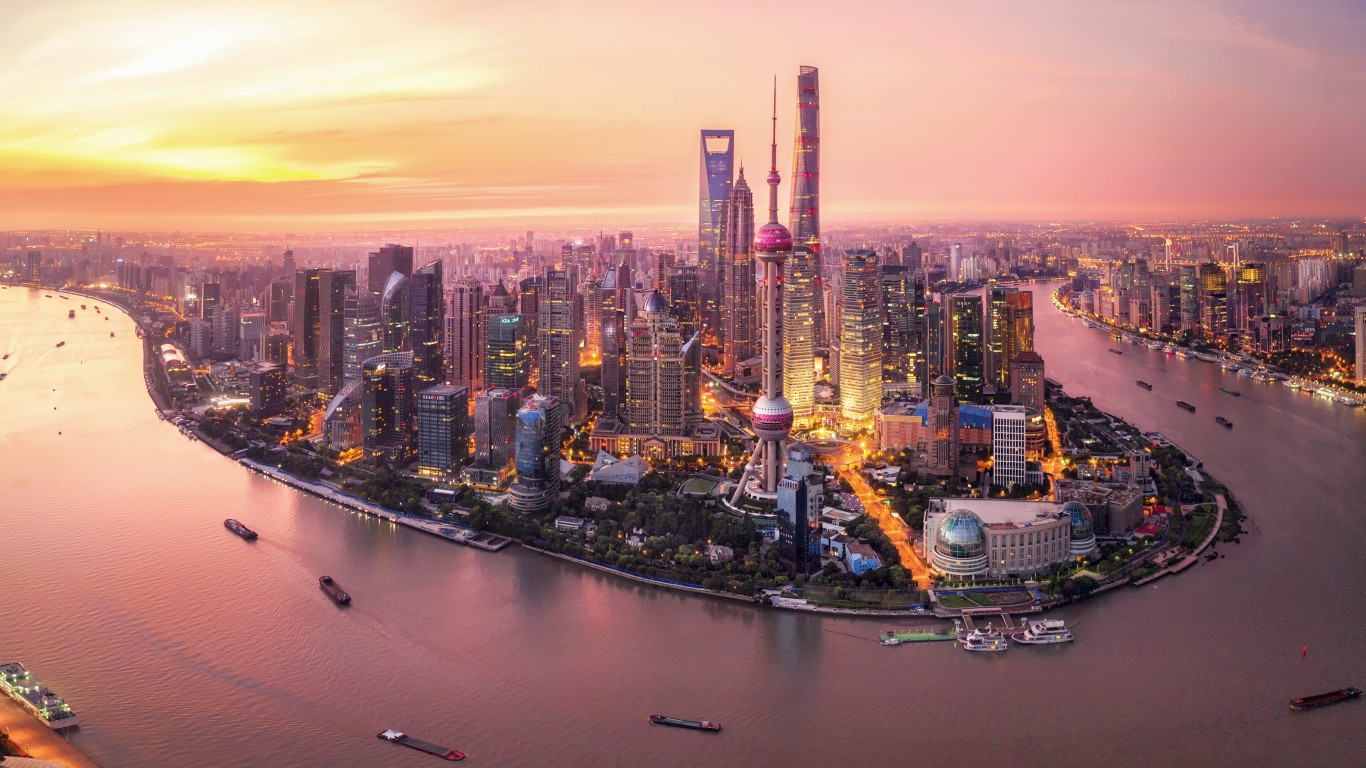
6. Zhujiajiao Watertown
> Site: Qingpu District (Shanghai), China
Shanghai is one of the most endangered cities in China. Many parts of it could be inundated, including its extensive park system and a good portion of its distinctive architecture, from medieval temples to the Art Deco structures of The Bund.
One particularly picturesque treasure that will likely be lost is the so-called Watertown in the township of Zhujiajiao. Dating back as much as 1,700 years, this is a complex of intersecting canals lined with traditional Chinese houses and crossed by 36 age-old bridges.
[in-text-ad]

7. Medieval center
> Site: Bruges, Belgium
One of the cities sometimes called “the Venice of the North,” Bruges, on Belgium’s northern coast, is known for its canals and its storybook medieval center, with its cobbled streets and ornamented 12th- through 14th-century buildings. The low-lying North Sea coastline makes the area, named as a UNESCO World Heritage site, particularly susceptible to flooding.

8. Mayan ruins
> Site: Tabasco state, Mexico
Its exposed position on the Gulf of Mexico in southeastern Mexico as well as the lack of flood control measures on its rivers puts Tabasco state in danger. Among the cultural treasures that could be lost are the vestiges of the ancient Olmec capital at La Venta and the pyramids, ceremonial structures, and other Mayan ruins at such sites as Comalcalco, Pomoná, El Tortuguero, Jonuta, and Aguada Fénix (where the largest Mayan temple yet discovered was found in 2020).

9. Shek O Village
> Site: Hong Kong, China
A peninsula jutting out into the South China Sea from the southeastern corner of Hong Kong Island, this one-time fishing village now known for its beaches, casual restaurants, hiking trails, and country club — a pleasant respite from the bustling heart of the city for visitors and locals alike.
Serious flooding has already affected the area, and storm-driven tides of more than nine feet above normal are possible in the coming decades.
[in-text-ad-2]

10. Sydney Opera House
> Site: Sydney, New South Wales, Australia
One of the most instantly recognizable architectural masterpieces in the world, this remarkable building on Sydney Harbour rises only 11 feet above sea level. While the entire structure is unlikely to disappear, the interior is already at risk of being flooded by storm surges, and could become permanently submerged if the water level in the harbor continues to rise.
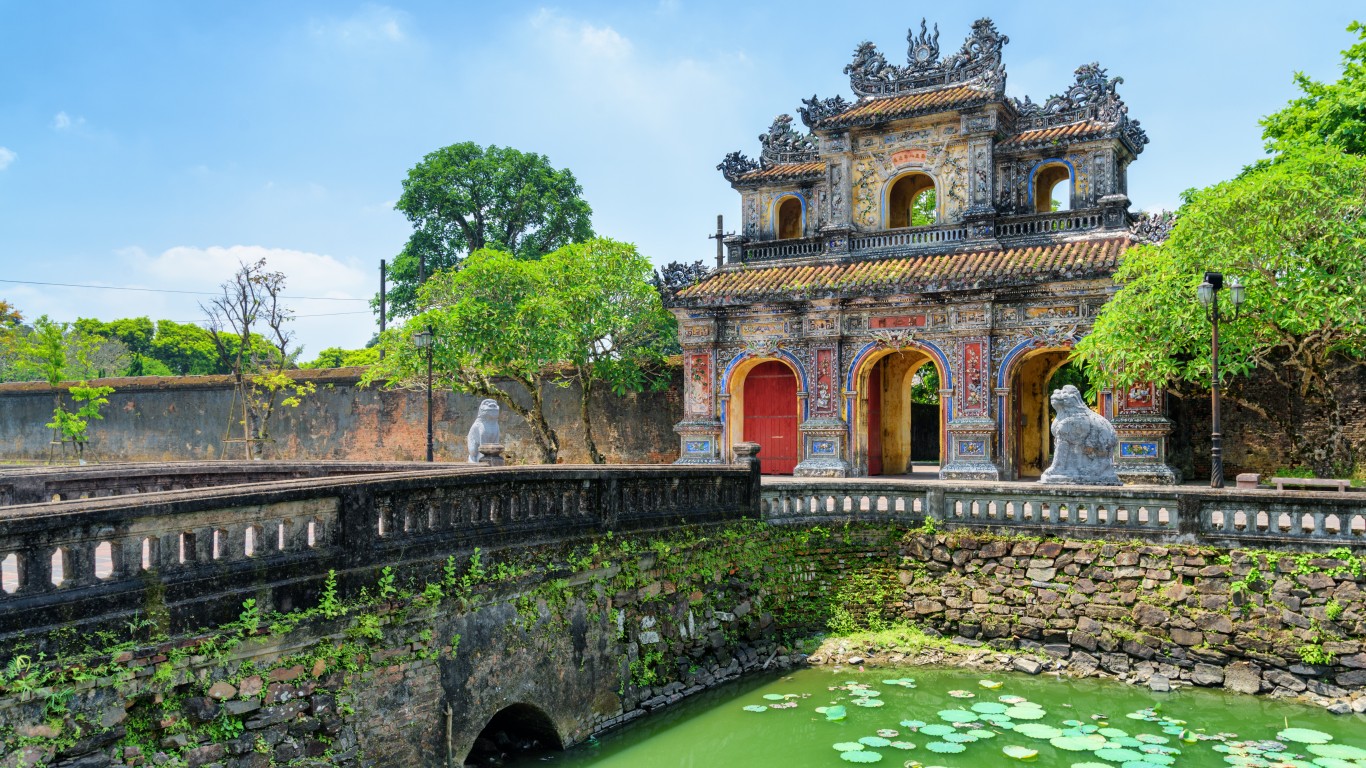
11. Huế monument complex
> Site: Huế, Vietnam
Three catastrophic floods in a row struck central Vietnam last year, and the area will almost certainly be badly affected by rising seas. The city of Huế, on the banks of the Song Huong River, risks seeing its complex of monuments — including temples, palaces, and fortifications — disappear beneath the waves. The complex, according to UNESCO, “is a remarkable example of the planning and construction of a complete defended capital city” in a “setting of great natural beauty.”
[in-text-ad]

12. Citadel of Quaitbay
> Site: Alexandria, Egypt
Founded by Alexander the Great, who named it after himself, Alexandria was the site of the magnificent Pharos lighthouse — one of the seven wonders of the ancient world. A series of earthquakes beginning in 956 AD eventually destroyed it, and in 1480, some of its stones were used in constructing the landmark Qaitbay Citadel, considered to be one of the most important such structures on the Mediterranean. Imposing though it may be, this historic monument could sink beneath the seas by 2050.
13. Mozambique Island
> Site: Mozambique Channel, Mozambique
Connected by a causeway to the Mozambique mainland, Mozambique Island was once the colonial capital of Portuguese East Africa. Now a UNESCO World Heritage site, with beautiful beaches as well as impressive colonial-era fortifications, churches, and other structures, it will almost certainly sink beneath the waters of Mossuril Bay within the next 30 years or so.

14. Lower Manhattan
> Site: New York, New York, USA
The southern reaches of the island of Manhattan, especially the area below Canal Street, could well become an Atlantis of the 22nd century. A record-breaking storm surge during Hurricane Sandy in 2012 flooded part of the area, including subway stations, and while there are projects under consideration to build barriers against the rising seas, these may come too late (or not at all). City Hall, Wall Street, The Battery, Chinatown, South Street Seaport, and many other definitive parts of the city could be lost.
[in-text-ad-2]

15. Buddhist temple district
> Site: Bangkok, Thailand
The bustling Thai capital, with a population of more than 10.5 million, has long suffered from land subsidence, slow-sinking ground surfaces caused primarily by groundwater extraction needed to supply water to the city. Subsidence has made Bangkok particularly vulnerable to the frequent flooding common to the region, and contributed to coastal recession as the rate of sea level rise in the Gulf of Thailand continues to increase.
Many of the city’s most beautiful and historic Buddhist temples are clustered around the Chao Phraya River that snakes through its center, and could be among the first features of Bangkok to drown.
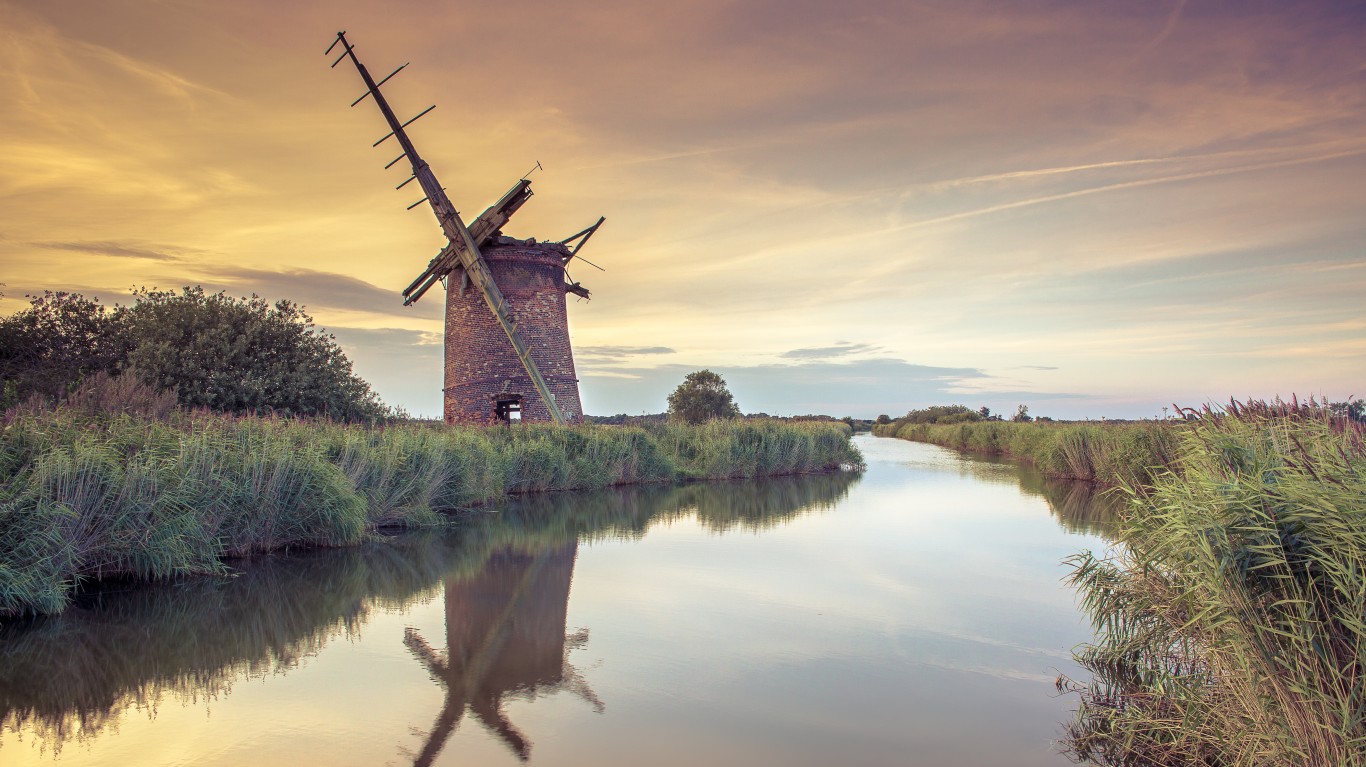
16. North Norfolk coastline
> Site: East Anglia, England
The North Norfolk coast, northeast of London, has been officially designated as an Area of Outstanding Natural Beauty for its pristine beaches, clear skies, dramatic cliffs, and salt marshes and wetlands — home to varied wildlife. Coastal flooding would submerge the area, as well as the Fens, the reclaimed marshland between Norfolk and Lincolnshire, and even the fabled cathedral city of Ely further inland.
[in-text-ad]
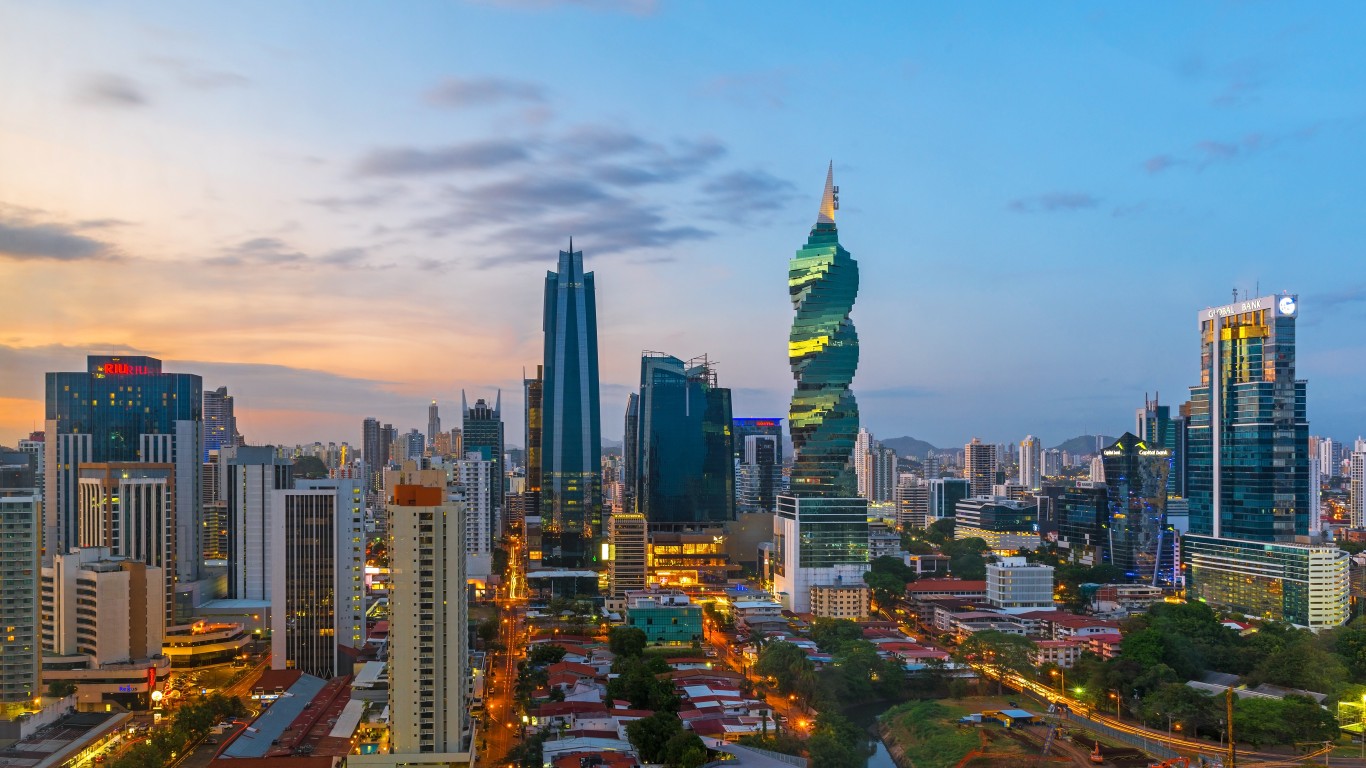
17. Casco Viejo
> Site: Panama City, Panama
With its superb collection of 17th- and 18th-century churches, palaces, and plazas, the old quarter of Panama City — a part known as the Casco Viejo, or Old Town, and also as San Felipe — was designated a UNESCO World Heritage site in 1997. Built on a spur of land jutting out into Panama Bay, it will slowly disappear if the Pacific continues to rise.

18. Herschel Island-Qikiqtaruk Territorial Park
> Site: Beaufort Sea, Yukon Territory, Canada
A territorial park covers much of this stark, often icebound island, which boasts a unique Arctic ecosystem that encompasses animals, sea birds, and aquatic life, as well as species of vegetation that exist only in Yukon. “Climate change is shifting the ecological forces that shape the island,” according to a 2019 report by the Yukon government.
The decrease in sea ice and substantial coastal erosion make it particularly susceptible to rising ocean levels, and in 2008, the World Monuments Fund placed the island on its “100 Most Endangered Sites” watch list.

19. French Quarter
> Site: New Orleans, Louisiana, USA
The French Quarter in this historic city, designated as a National Historic Landmark, is known for its bars and restaurants, its music scene, its permissive street life, and its Creole and American Victorian townhouses. While an extensive new levee system was installed after the devastation of Hurricane Katrina in 2005, and though the Quarter wasn’t among the most seriously affected parts of the city during that catastrophe, this definitive part of the city is still likely to be at risk of severe flooding if sea levels continue to rise.
[in-text-ad-2]

20. Ancient Culture Street
> Site: Tianjin, China
A major port city in northeastern China, just southeast of Beijing, Tianjin is a major financial center and ranked as one of the world’s top 25 science cities by the Nature Index. It is also the home of Gǔ Wénhuà Jiē, or Ancient Culture Street — a pedestrian thoroughfare along the Hai River with ornate temple gates, an elaborate palace, a Daoist temple, frescoed doors and windows, hundreds of shops selling local handicrafts, and numerous street food stands.
According to Earth.org, Tianjin is highly vulnerable to sea level rise, and could be drowned as early as 2030, Ancient Culture Street along with it.

21. Dōtonbori
> Site: Osaka, Japan
The Dōtonbori district, running between two bridges over the Dōtonbori Canal in Japan’s second-largest city, is a sort of waterside Asian Times Square, famed for its massive neon billboards, its restaurants and food stalls, its nightlife, and its overall hedonistic atmosphere.
A rise of about three feet in sea level would send water spilling over the canal walls and wash away many of the district’s attractions — and according to the Union of Concerned Scientists, such a rise is well within the range of projections for future decades if current global warming trends continue.
[in-text-ad]

22. Thousand Islands
> Site: Jakarta, Indonesia
The Thousand Islands (of which there are actually 342), a string of islets scattered off the coast of Jakarta, is home to resorts, recreational facilities, parks, private residences, and fishing villages. The archipelago is a marine conservation area, where rare hawksbill turtles hatch and other creatures of the sea and land live in relative peace.
According to a policy specialist from Indonesia’s Maritime Affairs and Fisheries Ministry, a sea level rise by 2050 could submerge some 2,000 of the country’s smaller islands, and the Thousand Islands would likely be among them.
23. Piazza San Marco
> Site: Venice, Italy
Venice is already flooded regularly by the “acqua alta,” or high water, that often covers the city streets and squares in spring and fall, sometimes to a depth of as much as five or six feet. A massive system of protective barriers to keep out the sea has been under construction for years, but may not ultimately provide enough protection if the water level rises enough.
Perhaps the most famous portion of the city to be affected would be the Piazza San Marco — a huge, beautiful square ringed by cafés and fancy shops beneath colonnades, with the Doge’s Palace and the Basilica of San Marco on one side.
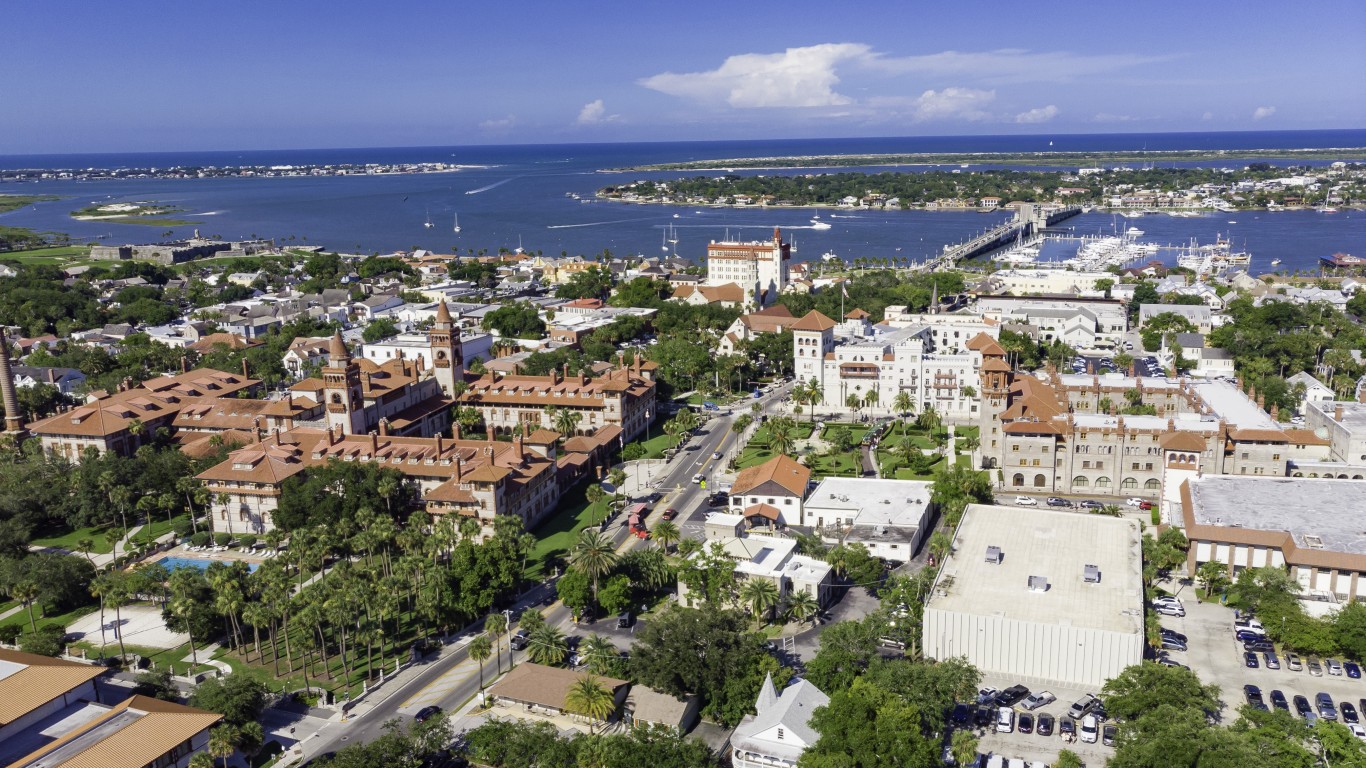
24. Historic downtown area
> Site: St. Augustine, Florida, USA
Established by the Spanish on the northeastern coast of Florida in 1565, St. Augustine, has a viable claim to being the oldest continuously inhabited city in the continental United States. A number of old Spanish houses and military and civic buildings survive, and the historic downtown area is known for its charm and easy-going lifestyle. Unfortunately, according to projections by Climate Central, there’s a 64% chance that the area will endure at least one flood more than four feet in depth between now and 2050.
[in-text-ad-2]

25. Anse Lazio
> Site: Praslin Island, Seychelles
Seychelles, an archipelago in the Indian Ocean off the eastern coast of Africa, is known for its natural beauty, its arts and music scene, and its exquisite beaches — of which Anse Lazio, dramatically framed by granite boulders, is one of the most appreciated. Unlike some other parts of Praslin Island, it isn’t protected by coral reefs, and was submerged by a tsunami in 2004 and again by monsoon floods in 2019. It has already been badly affected by sea level rise and erosion, and its future isn’t promising.

26. Pelourinho
> Site: Salvador, Bahia, Brazil
Salvador de Bahia, on Brazil’s east coast, was the country’s first capital. Its historic center, a UNESCO World Heritage site, is full of Renaissance-era churches and palaces and houses painted in pastels. The center’s Pelourinho district is particularly dense in impressive buildings and monuments.
Projections of sea level rise are tricky in Brazil because data from earlier times is spotty, but there is evidence of high sea levels in Salvador’s history, and the city is considered to be one of the coastal sites most vulnerable to rising tides.
[in-text-ad]
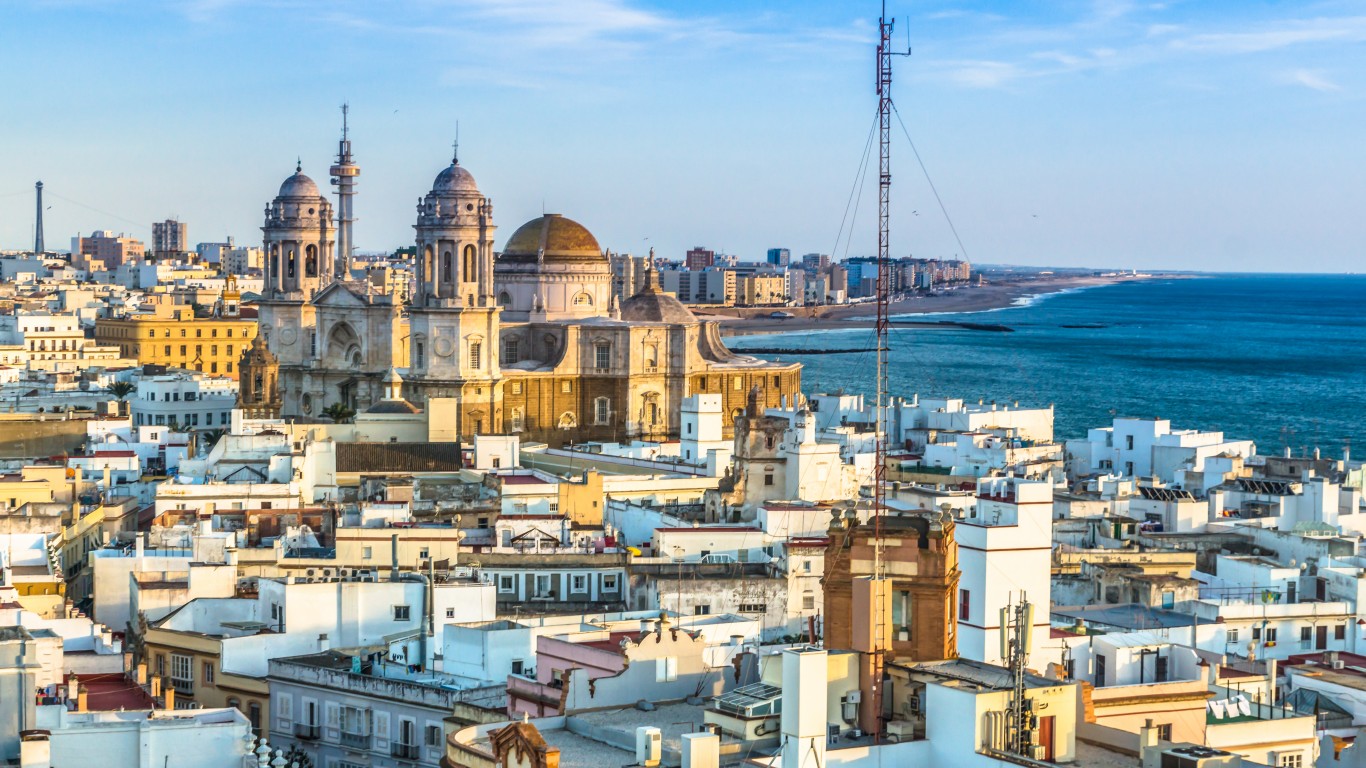
27. Seafront promenades and Parque Genovés
> Site: Cádiz, Spain
Cádiz, in the southwestern Spanish region of Andalusia, was established by the Phoenicians more than three thousand years ago, and is one of Europe’s oldest continuously inhabited cities (some say the oldest). On an irregularly shaped spit of land sticking out into the bay, it is defenseless against rising waters. Among the first portions of the city to go would be its romantic alamedas, or seafront promenades, and the idyllic Parque Genovés, with its waterfalls and lush tropical vegetation.
28. The Sundarbans
> Site: Bay of Bengal, India and Bangladesh
The Sundarbans are a vast mangrove forest on a delta in the Bay of Bengal, shared by India and Bangladesh. There are four UNESCO World Heritage sites within the area. Its waters, grasslands, and thickets are home to an estimated 453 species of wildlife, including the endangered Bengal tiger.
It is also a place that has experienced what has been called “extraordinarily rapid sea-level rise” in recent decades, and has lost almost 12% of its shoreline since 1980. If the increase in water level persists, according to researchers for the UN’s Intergovernmental Panel on Climate Change, the mangroves — and much of the fauna they host — will be gone by 2050.
Get Ready To Retire (Sponsored)
Start by taking a quick retirement quiz from SmartAsset that will match you with up to 3 financial advisors that serve your area and beyond in 5 minutes, or less.
Each advisor has been vetted by SmartAsset and is held to a fiduciary standard to act in your best interests.
Here’s how it works:
1. Answer SmartAsset advisor match quiz
2. Review your pre-screened matches at your leisure. Check out the advisors’ profiles.
3. Speak with advisors at no cost to you. Have an introductory call on the phone or introduction in person and choose whom to work with in the future
Thank you for reading! Have some feedback for us?
Contact the 24/7 Wall St. editorial team.
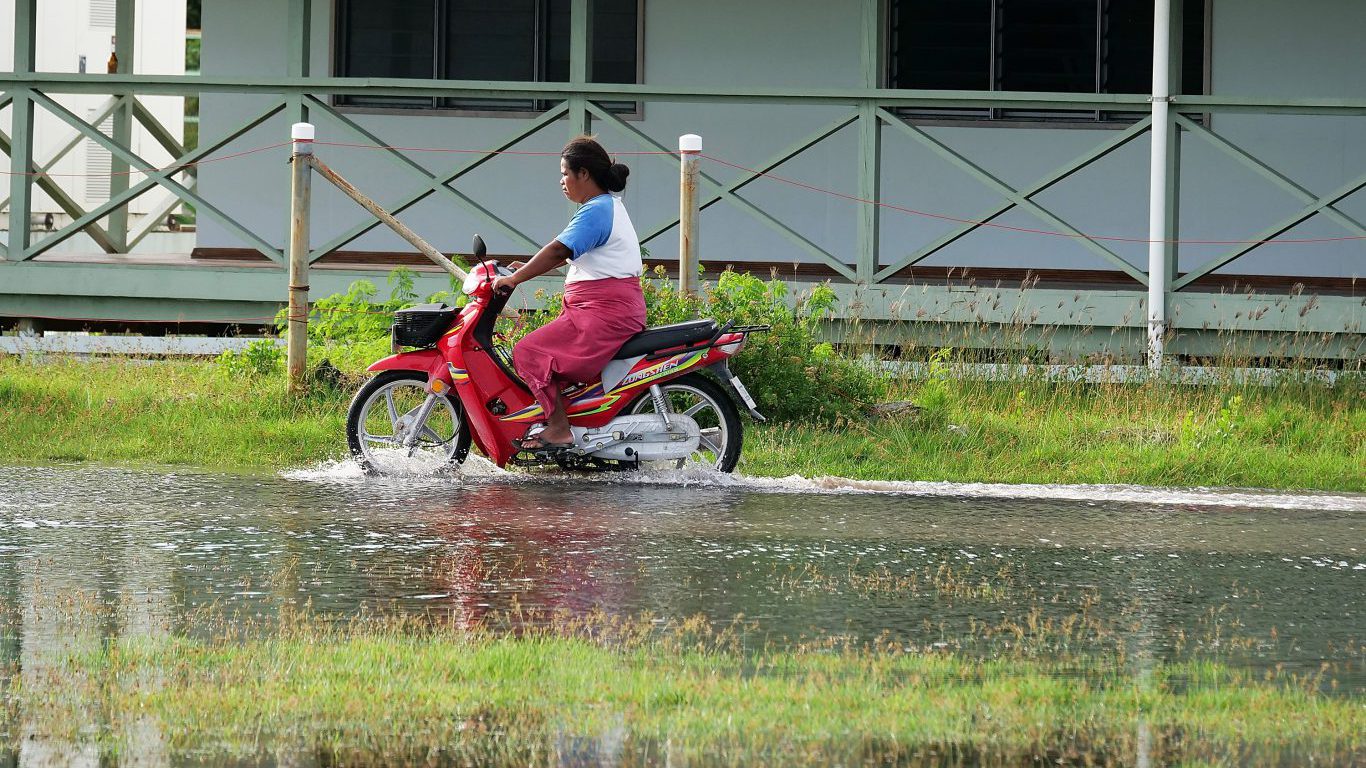 24/7 Wall St.
24/7 Wall St.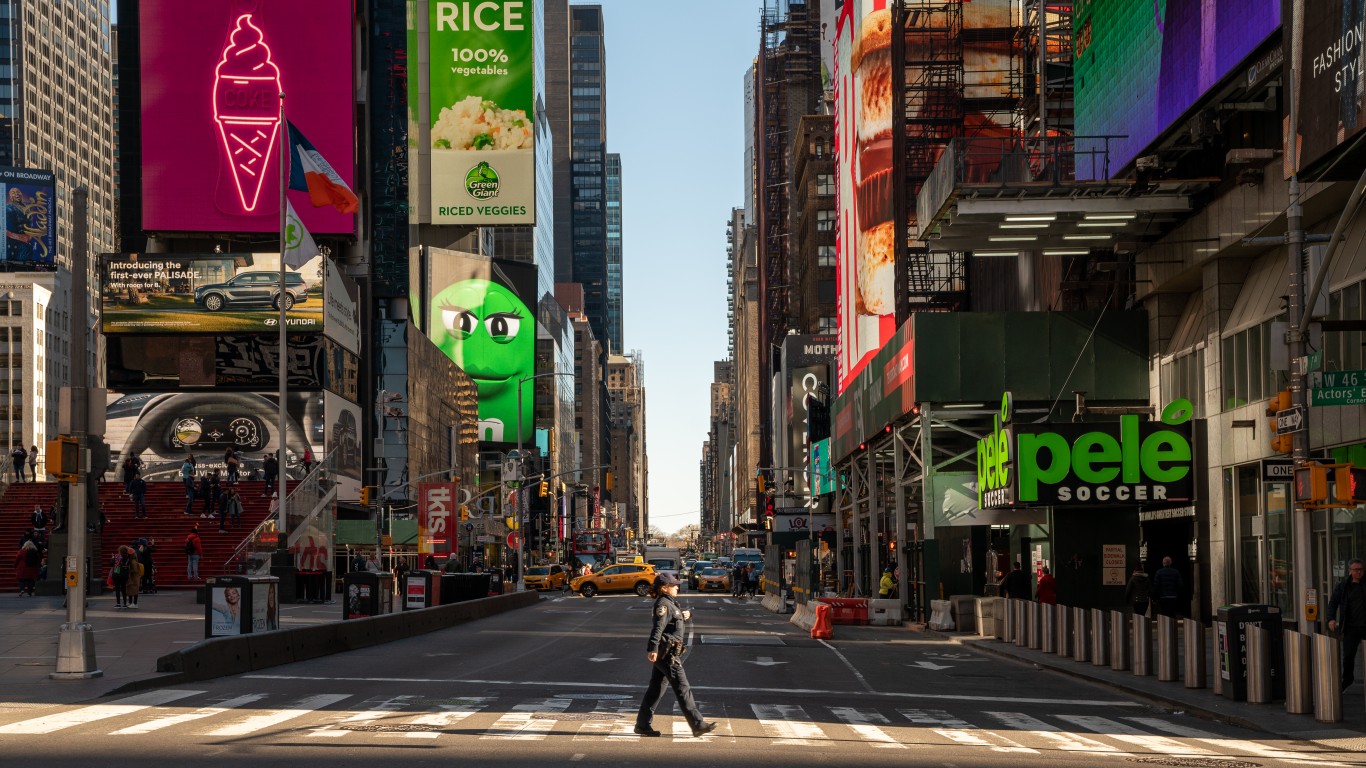 24/7 Wall St.
24/7 Wall St.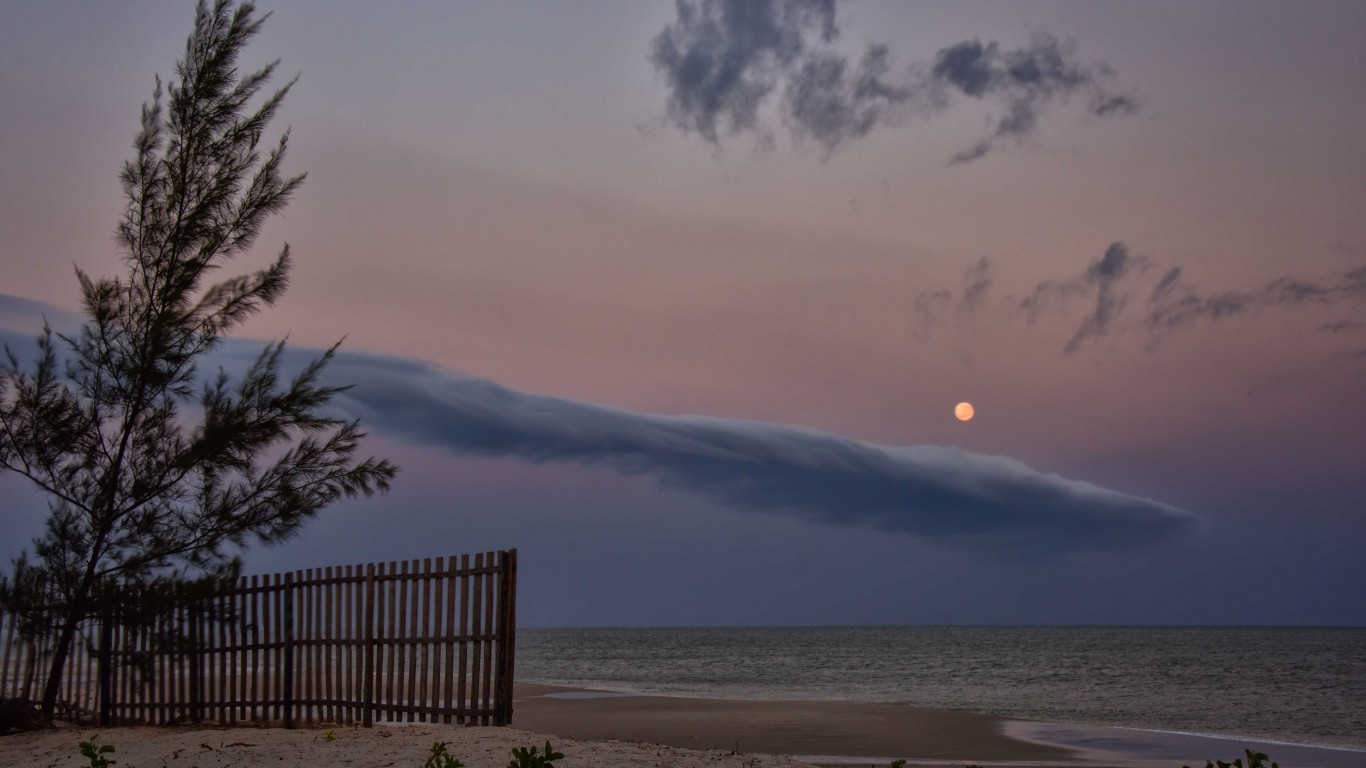
 24/7 Wall St.
24/7 Wall St.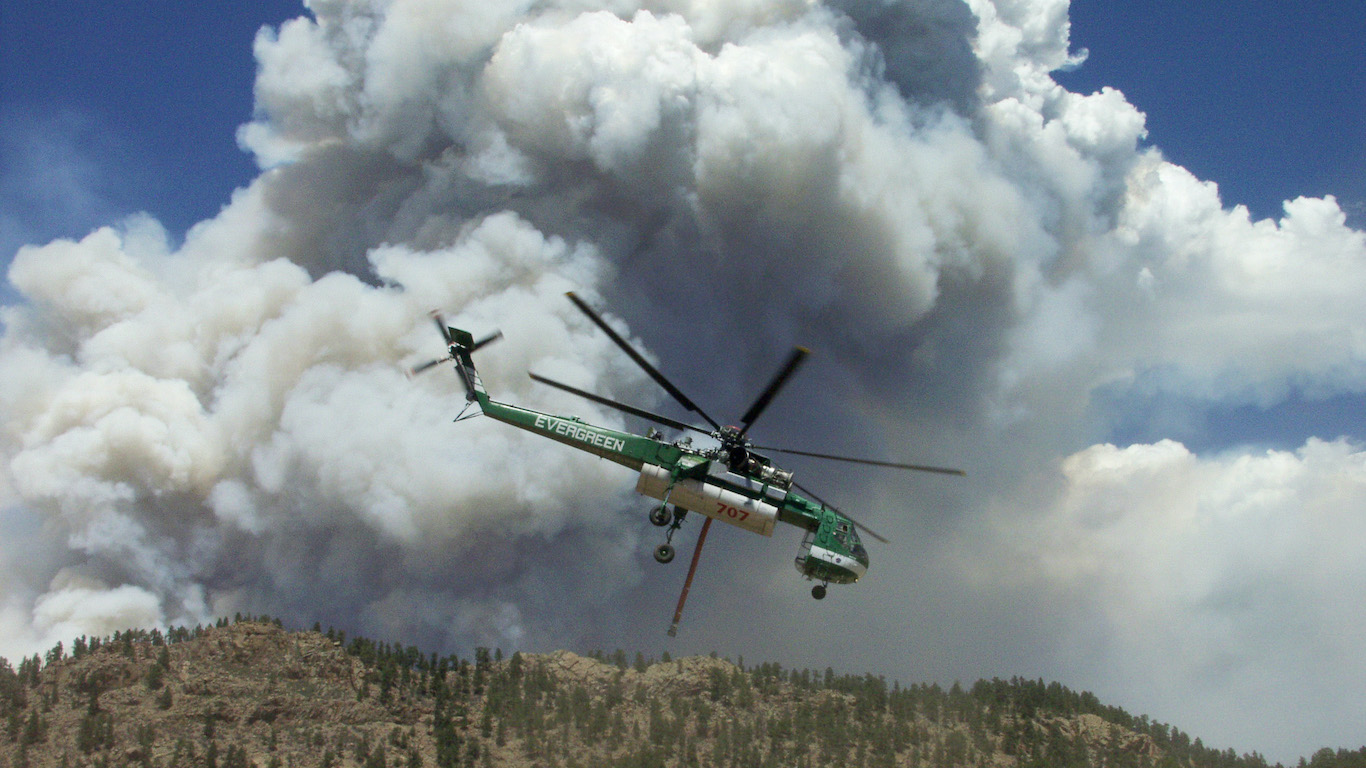 24/7 Wall St.
24/7 Wall St.